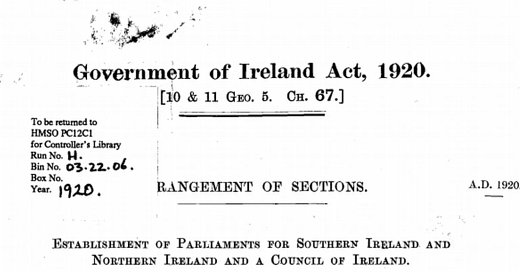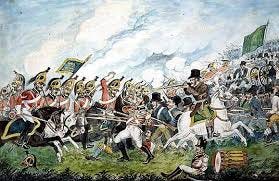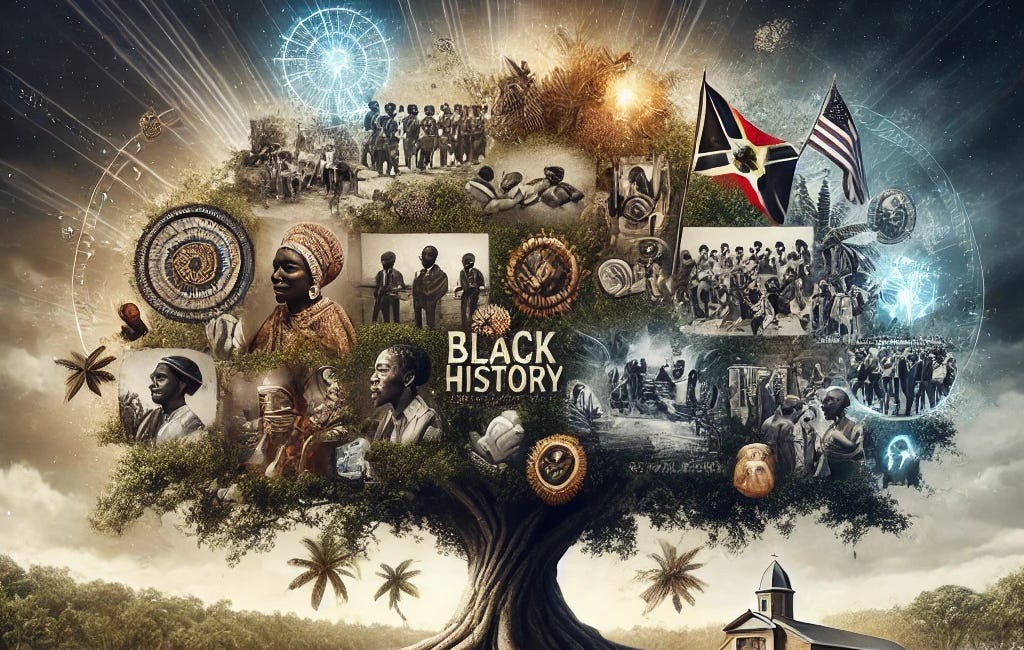The Irish Rebellion of 1798: When Ireland United Against Empire
Irish History Through the Lens of Rebellion and Resistance
In the long and bloody history of Ireland’s fight for independence, few moments shine as brightly—or as tragically—as the Rebellion of 1798.
Race, Religion, and the Original Divide-and-Conquer Strategy
Before the concept of race became the global hierarchy we know today, ethnic identity was the main marker of status—and the Irish were at the very bottom of whiteness.
The British didn’t see the Irish as equals. They were depicted as uncivilized, savage, and in need of control—a dehumanizing tactic eerily similar to how white supremacy would later classify Black and Indigenous peoples.
But the first form of colonization wasn’t about race—it was about religion.
When England invaded Ireland in the 12th century, it did so under the guise of “saving” the Irish from their “barbaric” ways. Christianization was the first tool of colonization, used to strip away Irish identity and enforce English rule.
By the time of the United Irishmen, and Theobold Wolfe Tone, the defining wedge was no longer Christian vs. Pagan—it was Protestant vs. Catholic. So much so that those that were forced into conversion to Catholocism wete losing footing and leagl satance to those Irishmen that were Protestansts as you can see here in the pamphlet written by Wolfe Tone himeself “Argument of Behalf of the Catholics of Ireland” This division was manufactured to keep Ireland fighting itself instead of its true oppressor. Does this sound familiar to you?
But in 1798, something radical happened.
The Irish set aside religious divisions and rose up—together.
It was a time when Protestants and Catholics set aside their divisions, when revolutionaries whispered the ideas of the French and American revolutions, and when Ireland nearly broke free from the chains of British rule.
This was not just another uprising. This was a declaration:
No King. No Master. Only Ireland
The 1798 Rebellion: A Brief but Fierce Uprising
After years of secret organizing, in May 1798, the United Irishmen launched a full-scale rebellion against British rule.
The plan was simple: rise up, county by county, until Ireland was free.
In Wexford, thousands of rebels took the fight to the British, seizing towns and forcing the Redcoats into retreat. In Antrim and Down, United Irishmen—many of them Presbyterians—fought for independence in the North. Across the country, Irish people—rich and poor, Protestant and Catholic—took up arms together.
The 1798 Rebellion: When Ireland Rose Up
After years of secret organizing, in May 1798, the United Irishmen launched a full-scale rebellion against British rule. The United Irishmen weren’t just talk—they were ready to fight.
🇮🇪Thousands of Irish rebels took up arms, inspired by the revolutions in America and France.
🇮🇪 They waged guerilla warfare against British forces, using the Irish countryside as their battlefield.
🇮🇪 They declared a temporary Republic in parts of Ireland, proving that independence wasn’t just a dream—it was possible.
The plan was simple: rise up, county by county, until Ireland was free.
In Wexford, thousands of rebels took the fight to the British, seizing towns and forcing the Redcoats into retreat. In Antrim and Down, United Irishmen—many of them Presbyterians—fought for independence in the North. Across the country, Irish people—rich and poor, Protestant and Catholic—took up arms together.
For a brief moment, victory seemed possible. But like all rebellions against the empire, it was met with brutal suppression.
The British, fearing the loss of their prized colony, responded with extreme brutality—burning villages, executing rebels, and massacring civilians.
By October 1798, the rebellion was crushed.
Mass executions, public hangings, and exile followed—anyone associated with the United Irishmen was hunted down.
Wolfe Tone was captured and sentenced to death—but rather than give the British the satisfaction, he took his own life in prison.
But even in death, his legacy lived on.
Who Was Theobald Wolfe Tone?
If you recognize the name Wolfe Tone, you’re already halfway to understanding why he’s one of Ireland’s most famous revolutionaries. (And yes, the legendary rebel band The Wolfe Tones is named after him—because their music is a direct continuation of his fight for freedom!)
Tone was a Protestant lawyer turned revolutionary who refused to play the empire’s game of religious division. He saw something deeper—that Irish Catholics and Protestants had a common enemy: British rule.
And so, in 1791, he co-founded the Society of United Irishmen, an organization committed to breaking free from British colonial control.
Their demand?
An independent Irish Republic, where all Irish people—Catholic and Protestant—were free and equal.
Their method?
Armed revolution.
Why the 1798 Rebellion Still Matters
The 1798 Rebellion wasn’t just a failed uprising—it was a blueprint for resistance.
It proved that:
Revolution requires unity—when oppressed people come together, they become a force that empires fear.
Colonizers will always use division as a weapon—whether through religion, race, or class.
Even when rebellions are crushed, they plant the seeds for the next fight.
And those seeds?
They bloomed in the Irish War of Independence. They bloomed in the Civil Rights Movement of the 1960s. They bloomed in every struggle for Irish liberation that came after.
And they bloomed in movements across the world—including Black liberation.
The Black-Irish Connection: Shared Struggles, Shared Resistance
To understand the connections between Black and Irish liberation, we have to zoom out and look at the bigger picture: Colonization was never a singular event—it was a global strategy.
At the very moment that Ireland was resisting British rule, Britain was also expanding its empire across Africa and the Caribbean, perfecting its systems of oppression on multiple fronts.
The plantations of Jamaica and Barbados were filled with enslaved Africans—many of whom toiled alongside indentured Irish servants.
The “Irish slave trade” may be a myth, but there is no doubt that hundreds of thousands of poor Irish were forcibly transported to the colonies—some in chains, some as indentured servants, and many to their deaths.
Both Black and Irish people were criminalized simply for existing under British rule—Black Codes in the U.S. and Penal Laws in Ireland stripped them of rights, land, and autonomy.
And even after chattel slavery ended, the methods of control evolved—just as Britain partitioned Ireland in 1921 through legislation such as the Government of Ireland Act, it also used colonial borders to divide Black nations in Africa and the Caribbean, ensuring generations of conflict.
The Irish in the Abolitionist Movement
The struggles weren’t just parallel—they intersected.
Daniel O’Connell, one of Ireland’s most famous political leaders, was an outspoken abolitionist and publicly denounced American slavery in the early 1800s. He called on Irish immigrants in the U.S. to stand against slavery, though many rejected the call in favor of assimilating into whiteness.
Frederick Douglass traveled to Ireland in 1845 and was stunned to find a people who, though not enslaved, were subjected to brutal colonial rule. He saw in the Irish struggle a reflection of his own.
Black radicals looked to Irish revolutionaries for inspiration. In the 1960s and 70s, members of the Black Panthers studied the guerrilla tactics of the Irish Republican Army (IRA), recognizing that British colonial policing was the blueprint for American anti-Black policing.
And in return?
Irish revolutionaries stood in solidarity with Black liberation.
Bobby Sands, the famous IRA hunger striker, wrote of his solidarity with oppressed people worldwide, including Black Americans fighting white supremacy.
In 1981, during the IRA hunger strikes, Black activists in South Africa held rallies in their honor, recognizing the shared struggle against empire.
Rebel Music: The Soundtrack of Resistance
If there’s one thing Irish and Black struggles have in common, it’s that we turn our pain into music.
And no band captures the rebellious Irish spirit quite like The Wolfe Tones.
🎵 "A Nation Once Again"—an anthem of Irish nationalism, calling for unity and revolution.
🎵 "Come Out Ye Black and Tans"—a fiery rejection of British forces in Ireland, often played at protests.
🎵 "Joe McDonnell"—honoring an IRA member who died in the hunger strikes, much like Bobby Sands.
Because when empires try to erase our history, we sing it louder.
Shout out to my Irish sib she always had the best Irish tunes and we met on TikTok over it.
Further Learning: Watch, Read, and Experience
📺 Watch:
"Rebel Heart" (BBC) – A drama about Irish revolutionaries.
"The Wind That Shakes the Barley" (2006) – A film about the Irish War of Independence.
📖 Read:
"To Hell or Barbados" by Sean O’Callaghan – A deep dive into Irish indentured servitude in the Caribbean.
"Black and Green: The Fight for Civil Rights in Northern Ireland & Black America" by Brian Dooley.
Final Reflection: The Fight Is Not Over
The 1798 Rebellion was crushed, but the fight never ended.
Every uprising, every act of defiance, every moment of solidarity between Black and Irish struggles reminds us that liberation is a long game—and we are still in it.
Because empires fall. They always do.
And those who fight for justice?
We outlast them all.
Tomorrow, we continue this journey with the Penal Laws in Ireland, laws that stripped the Irish of their land, their rights, and their freedom—just as similar legal systems were used to control Black people across the world. Understanding these laws is crucial to understanding the mechanics of oppression—and how we continue to resist.
Consider becoming a paid subscriber or purchasing the living document, 59 Days of Resistance: A Journey Through Black and Irish Liberation, that will house all of this information along with Black History through the Lens of Liberation.
The revolution needs to be funded, and it is well worth the $8 a month to ensure this work continues. If cost is a barrier, email me at scholarships@desireebstephens.com—because liberation should always be accessible.
Join me as we unravel the next chapter in Irish History Through the Lens of Rebellion and Resistance.
In solidarity and liberation,
Desireé B. Stephens
Educator | Counselor | Community Builder
Founder, Make Shi(f)t Happen






